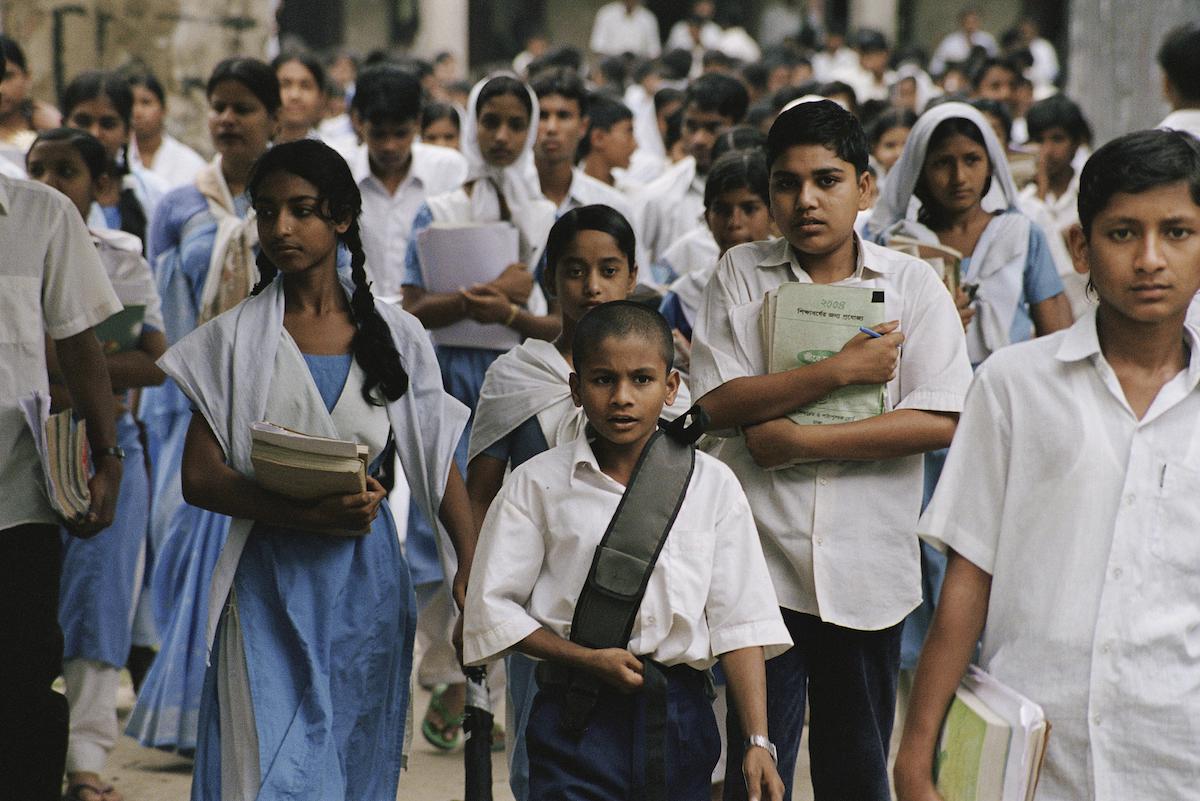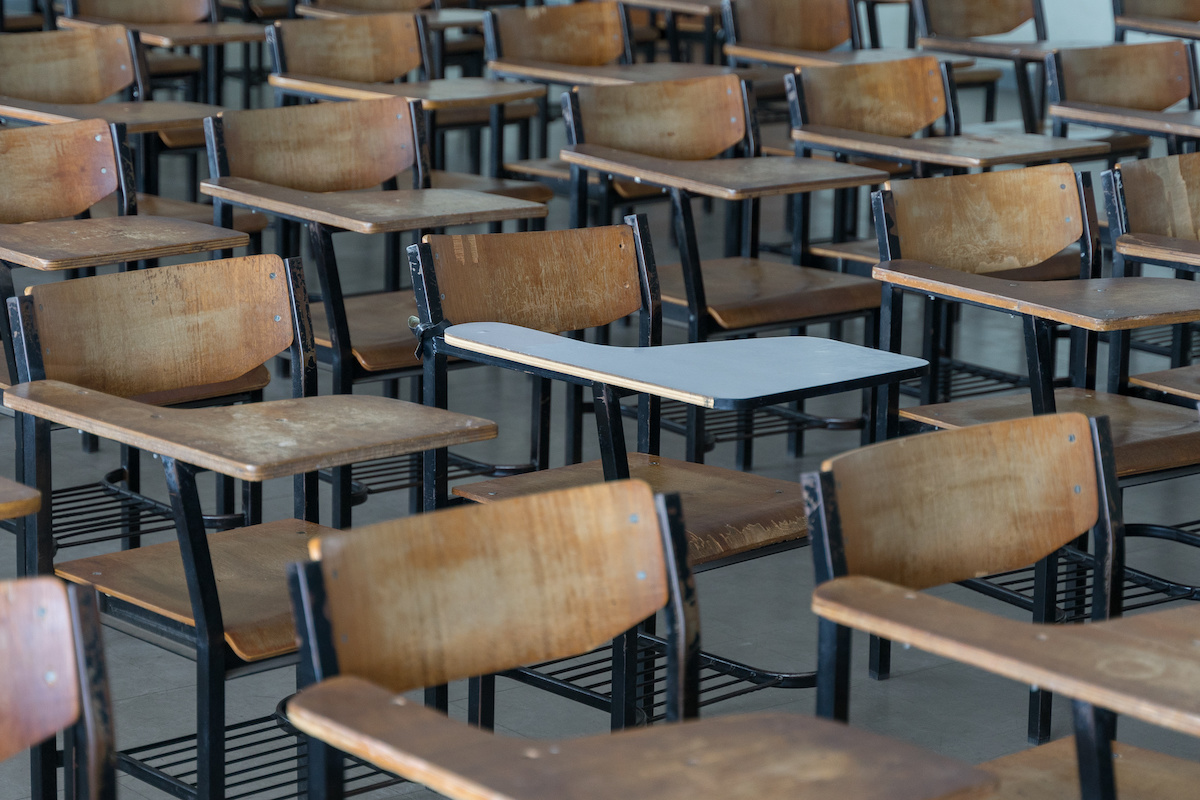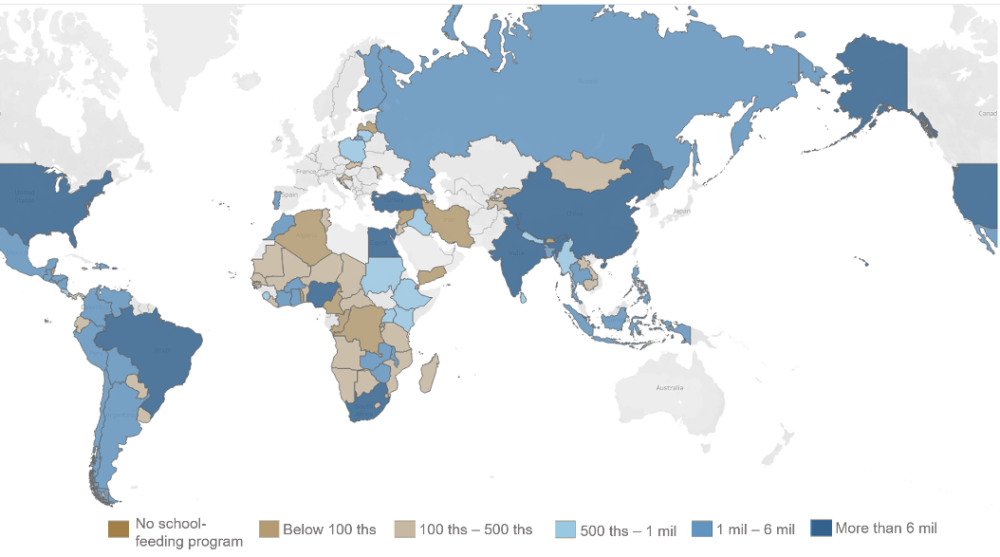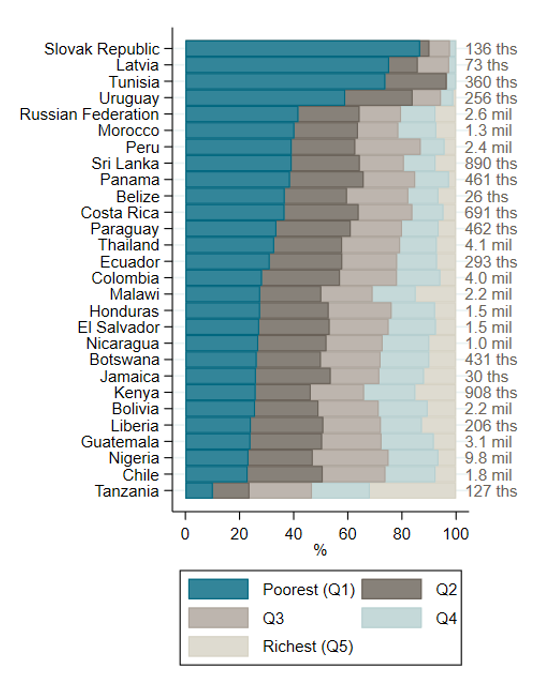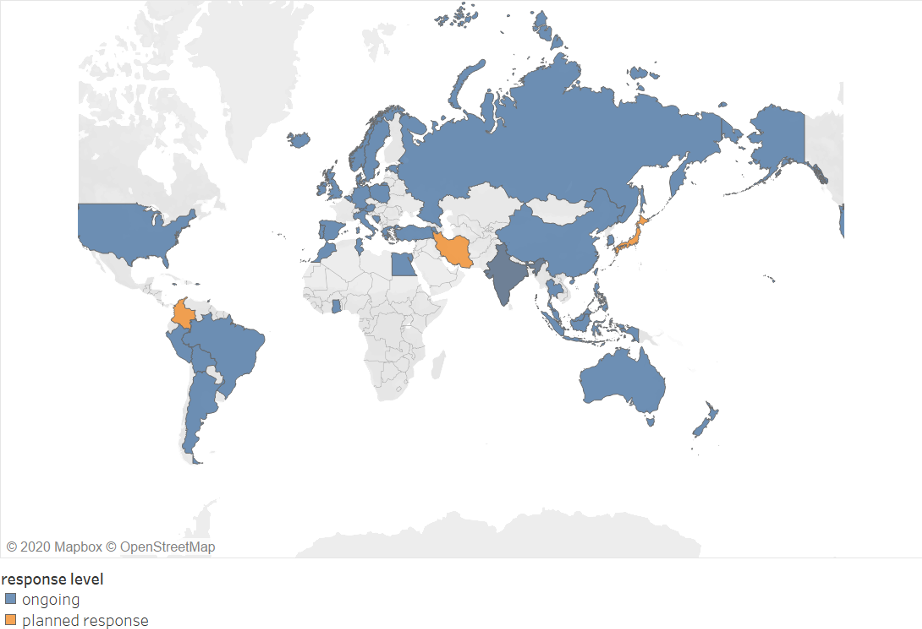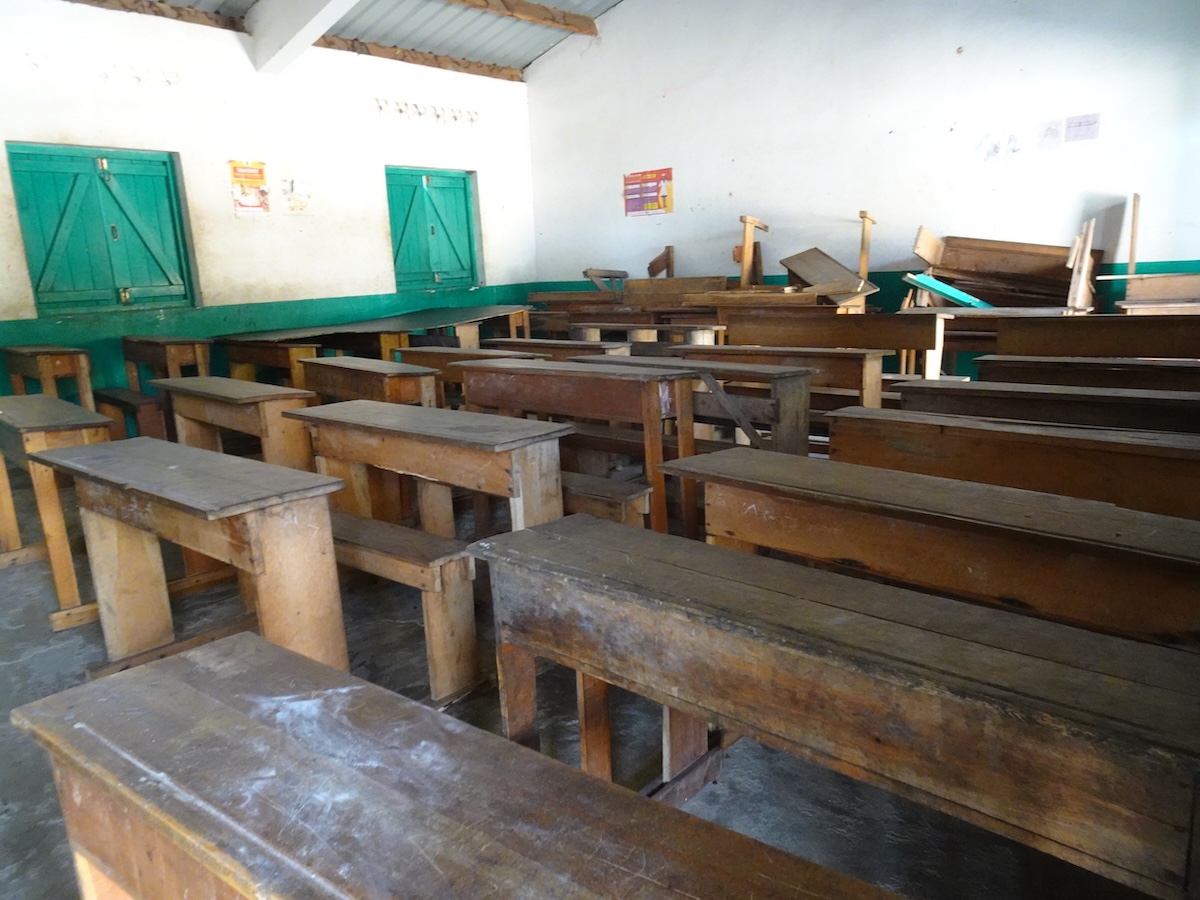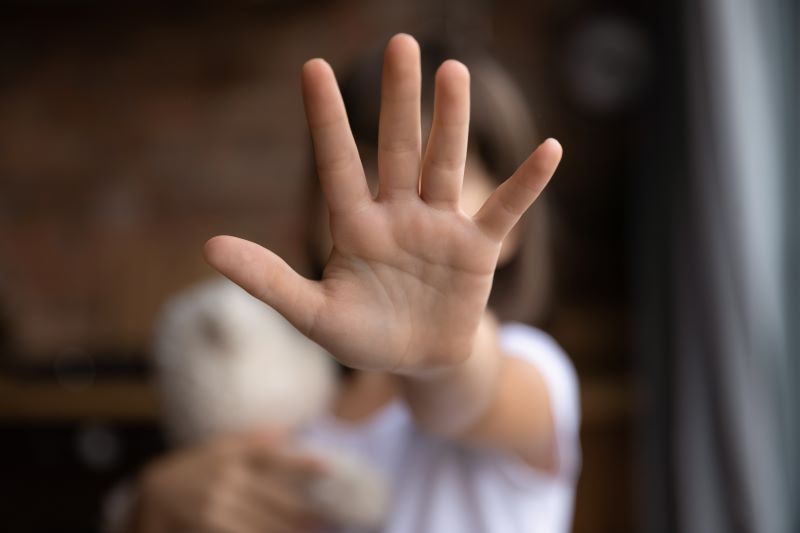Recommended
As governments around the world close down schools in response to COVID-19—1.3 billion children are now out of school—we at the Center for Global Development are looking at what this means for children in low- and middle-income countries, and what governments might do to mitigate the consequences.
In this post, we look at school feeding. Hundreds of millions of kids get meals at school and, for many, this is the only hot, nutritious meal they have all day. We examine how many and which children will be most affected, and what the policy options are to ensure children do not go hungry during school closure.
School meals are an important social safety net for children
School meals are an explicit or implicit transfer (of the value of the food distributed) to households. According to Banerjee and Duflo, poor people spend up to 75 percent of their income on food. School feeding programs are often a very important part of a poor family’s “budget”: nearly half of low-income households in the United States say it’s harder to make ends meet during the summer holidays, when their children don’t receive school meals. With schools closing and more than a billion children now out of school, millions of poor children will not be receiving this “transfer.”
More than 300 million children in 117 countries receive meals at school
The World Food Programme (WFP) estimates that at least 310 million children are fed at school. Of these, 100 million are in India and 48 million in Brazil, two countries which currently have statewide school closures. South Africa and Nigeria also have some of the biggest programs, feeding more than 9 million children each (Figure 1). And it’s not just in low- or middle-income countries—millions of kids in rich countries rely on school meals too. The majority of school feeding programs focus only on primary-school level children (49 percent) and less than a third feed both primary and pre-primary children. Most programs supply midday lunch and some countries feed children more than once a day.
Figure 1. Number of beneficiaries of school feeding programs
Source: ASPIRE dataset, WFP & GCNF
What can governments do to stop children going hungry during the COVID-19 pandemic?
Even in the face of unprecedented worldwide school closures, there are actions that governments can take to address both the immediate needs of children who are not receiving school meals and the continuing need once this shock is over.
Focus in the immediate term on the poorest and most vulnerable children
Our colleagues recently highlighted the likely economic impacts of COVID-19 in low- and middle-income countries. Prioritising the poorest children for social protection programs during the pandemic—by analysing wealth quintiles, school gender disparities, and regions which typically suffer from food insecurity—could smooth these effects.
Some countries do a better job than others at implementing progressive programs that reach a great many very poor children (figure 2). However, in the countries where data was available, targeting is moderately pro-poor, with more than 20 percent of beneficiaries in the lowest economic quintile. In 2012, the government of Ghana found that only 21 percent of resources allocated to their school feeding program was directed to their poorest citizens (defined as the poorest 28.5 percent of the population). Using national poverty statistics, they ended the program in better-off areas and re-allocated resources to poorer areas, resulting in 70-80 percent of resources going to the poorest communities. A study of the retargeted program by Aurino et al. suggests that it led to remarkable education and health benefits for marginalized children. Of course there will be substantial targeting challenges in countries where most of the population is poor or near-poor, and especially during a crisis.”
Figure 2. Beneficiaries of school feeding programs (by wealth and total)
Source: ASPIRE database & WFP country surveys (Note: latest available data. Numbers indicate total beneficiaries).
Supplement cash transfer programmes, take-home rations, or vouchers
Since the COVID-19 outbreak began, nearly 60 countries, in all regions except sub-Saharan Africa, have launched or supplemented cash transfer programs to support vulnerable citizens, with some providing cash specifically to compensate for school meals. While targeting of beneficiaries and delivery of cash is not straightforward, policymakers may still want to consider launching a program to respond to the epidemic.
Figure 3. Countries launching or supplementing cash transfer programs
Source: data collation by Ugo Gentilini
The discussion around cash versus in-kind transfers has been long and extensive, with various considerations for policymakers. An evaluation in India of in-kind and cash transfers for maternal and child health nutrition shows that cash may not have large effects for young mothers, given their limited access to banks or their freedom to visit markets. On the other hand, the effectiveness of take-home rations depend on the quality, size, and timeliness of the food delivered.
Compared with other modalities of school feeding, distributing take-home rations can better target beneficiaries and reduce gender gaps (by allocating rations to girls, for example). They can have higher-value transfers with lower administrative costs and don’t depend on kitchen infrastructure, only on storage. Evidence from Burkina Faso also suggests children share rations with younger siblings and other household members, generating intra-household spillovers. This may make take-home rations a viable alternative to cash transfers in times of school closures, especially given the greater ease with which beneficiaries can be targeted.
Keep schools as feeding centres providing take-home rations
As we noted in a previous blog, keeping children apart while schools are closed is important to reduce transmission. However, in contexts where clear instructions can be communicated to parents, it may be feasible to continue onsite meal preparation for collection. Some US cities, including New York and Los Angeles, are providing children with school meals through drive-through channels, with “grab and go” bagged meals delivered outside of schools. In England schools are preparing hot meals at school for takeaway or for transportation to a community center. Some states in India and the Jamaican Ministry of Education are providing meals or food at schools, to be collected by families.
Work with partners to support feeding, including NGOs and community organizations
Policymakers will look to their partners for support during a crisis. Many nongovernmental organizations and charities are involved in school feeding and may be able to adapt or increase their services during the crisis. The Food and Agriculture Organization of the UN suggests that food from school feeding programs can be redistributed through donations to food banks, social organizations, nongovernmental organizations, and churches. In Sudan and Democratic Republic of Congo, emergency school feeding projects increased community participation. Women from the community served as cooks and provided oversight to the program.
Plan now for what happens when schools reopen
Policymakers will need to think about the immediate and long term as they plan. As well as the social safety net they provide, school feeding programs have strong effects on enrollment and attendance in low- and middle-income countries, especially for girls. A recent meta-analysis of 32 countries in sub-Saharan Africa demonstrated that girls enrollment increased by 28 percent and boys by 22 percent due to school feeding programs. Schools are now closed, so attendance and enrollment rates may not seem relevant. But policymakers should be considering now how to make sure all children come back to school when they reopen. School meals likely play a part in that.
Keeping children fed during school closures is one of the many challenges facing governments as they respond to COVID-19, and countries have so far adopted a range of innovative national and local policy solutions. We have built an open-access database on educational responses to school closures and will try to track school meal policies for each country. We welcome any and all feedback.
Thank you to Lee Crawfurd, Matthew Jukes, Laura Moscoviz, Jack Rossiter, and Sharmili Satkunam for their helpful comments
Disclaimer
CGD blog posts reflect the views of the authors, drawing on prior research and experience in their areas of expertise. CGD is a nonpartisan, independent organization and does not take institutional positions.


